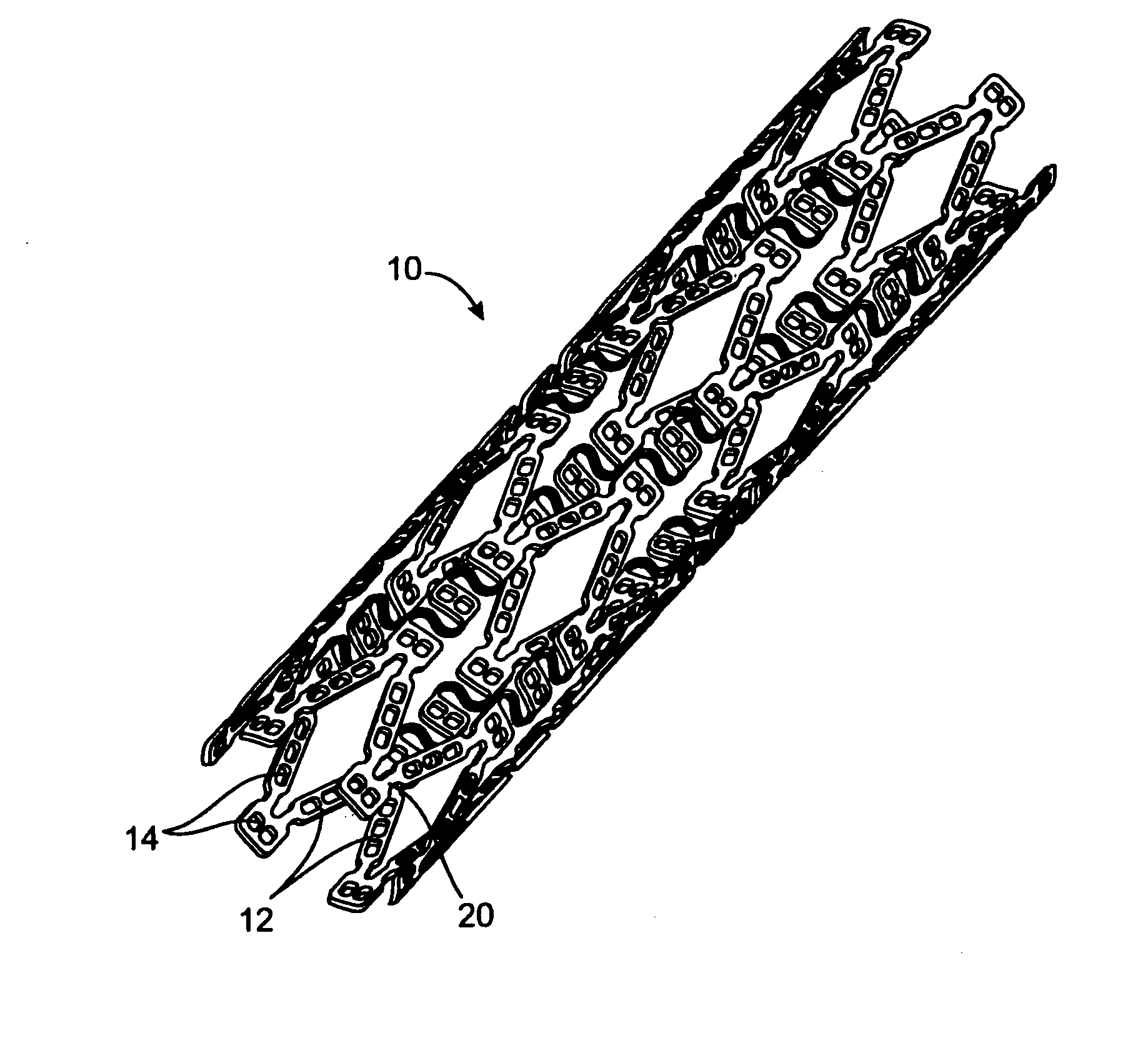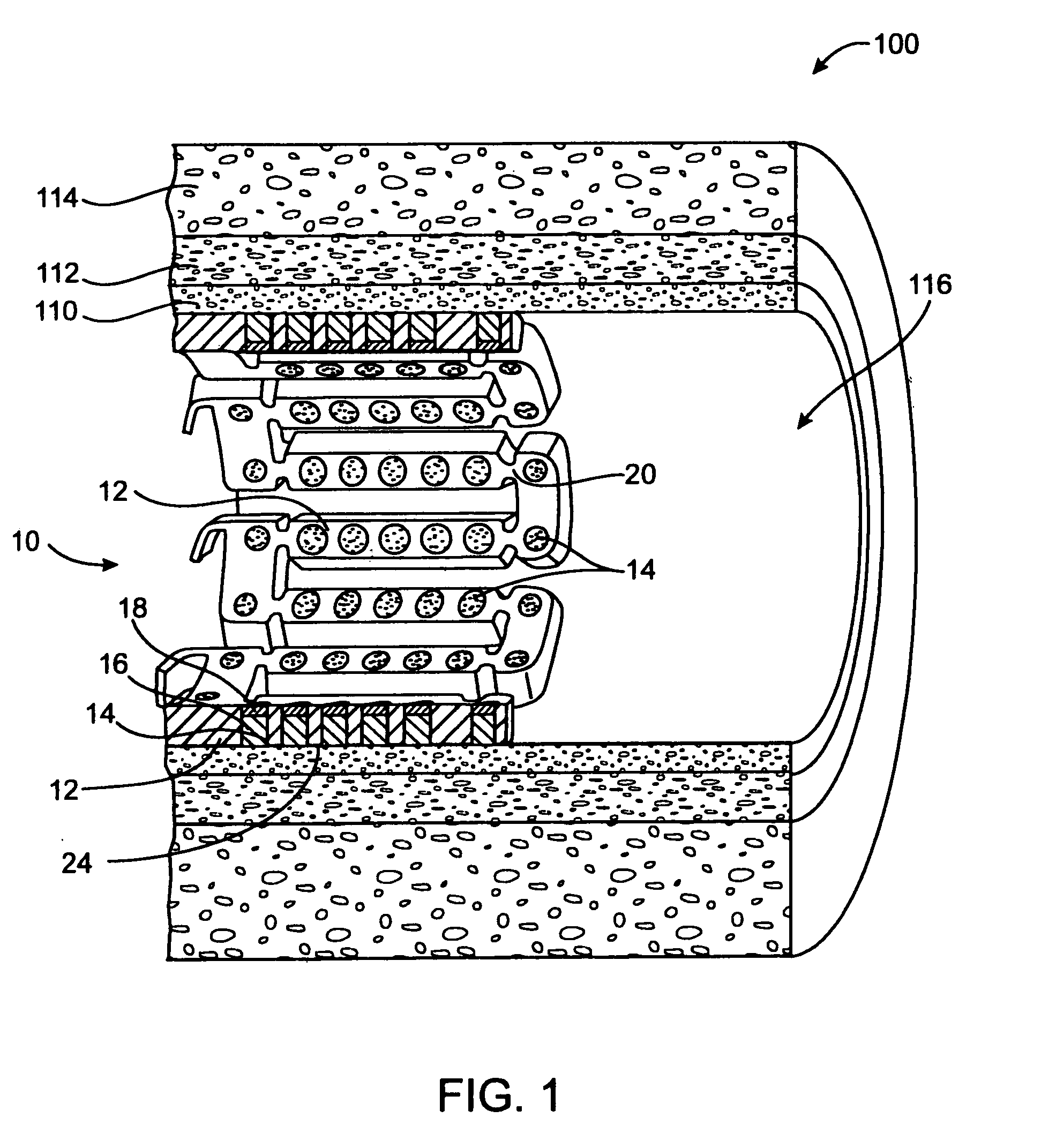Expandable medical device and method for treating chronic total occlusions with local delivery of an angiogenic factor
a technology of an angiogenic factor and a medical device, which is applied in the direction of prosthesis, surgery, blood vessels, etc., can solve the problems of inability to treat chronically occluded arteries, inability to provide adequate blood flow, so as to achieve the effect of preventing adequate blood flow
- Summary
- Abstract
- Description
- Claims
- Application Information
AI Technical Summary
Benefits of technology
Problems solved by technology
Method used
Image
Examples
example 1
[0135] In this example, a drug delivery stent substantially equivalent to the stent illustrated in FIGS. 2 and 3 having an expanded size of about 3 mm×17 mm is loaded with VEGF-145 in the following manner. The stent is positioned on a mandrel and a slow degrading layer or barrier layer is deposited into the openings in the stent. The barrier layer is high molecular weight PLGA provided on the luminal side to prevent substantial delivery of the angiogenic compositions to the luminal side of the device. The layers described herein are deposited in a dropwise manner and are delivered in liquid form by use of a suitable organic solvent, such as DMSO, NMP, or DMAc. The degradation rate of the barrier layer is selected so that the barrier layer does not degrade substantially until after the administration period. A plurality of layers of VEGF-145 and low molecular weight PLGA matrix are then deposited into the openings to form an inlay of drug for angiogenesis. The VEGF-145 and polymer ma...
example 2
[0136] In this example, a drug delivery stent substantially equivalent to the stent illustrated in FIGS. 2 and 3 having an expanded size of about 3 mm×17 mm is loaded with VEGF-145 and angiogenin in the following manner. The stent is positioned on a mandrel and a slow degrading layer or barrier layer is deposited into the openings in the stent. The barrier layer is high molecular weight PLGA provided on the luminal side to prevent substantial delivery of the angiogenic compositions to the luminal side of the device. The degradation rate of the barrier layer is selected so that the barrier layer does not degrade substantially until after the administration period.
[0137] A plurality of layers of angiogenin and low molecular weight PLGA matrix are then deposited into the openings to form an inlay of drug for angiogenesis. The angiogenin and polymer matrix are combined and deposited in a manner to achieve a drug delivery profile which results in administration in about 1 hour to about ...
PUM
| Property | Measurement | Unit |
|---|---|---|
| thickness | aaaaa | aaaaa |
| thickness | aaaaa | aaaaa |
| thickness | aaaaa | aaaaa |
Abstract
Description
Claims
Application Information
 Login to View More
Login to View More - R&D
- Intellectual Property
- Life Sciences
- Materials
- Tech Scout
- Unparalleled Data Quality
- Higher Quality Content
- 60% Fewer Hallucinations
Browse by: Latest US Patents, China's latest patents, Technical Efficacy Thesaurus, Application Domain, Technology Topic, Popular Technical Reports.
© 2025 PatSnap. All rights reserved.Legal|Privacy policy|Modern Slavery Act Transparency Statement|Sitemap|About US| Contact US: help@patsnap.com



